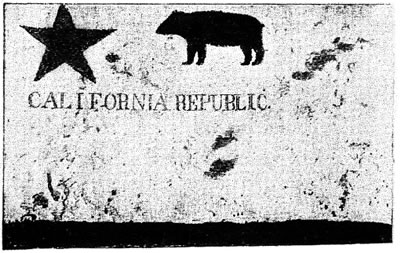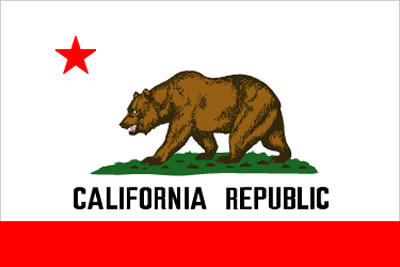Defend your right to bear flags
On this date in 1846, 33 men hoisted a flag in the square of the little town of Sonoma — just on the other side of Sonoma Mountain from here — and proclaimed themselves independent of the Mexican government, which held the local reins of power at the time.

That flag, emblazoned with a lone star, a red stripe, and the silhouette of a grizzly bear (at least, what creator William Todd intended to be a grizzly bear — wags commented that Todd's bear looked more like a pig), marked the dawn of the short-lived California Republic, nicknamed "the Bear Flag Republic."
The hardy band of insurgents took as their prisoner General Mariano Guadalupe Vallejo, commandant of the Presidio of Sonoma, and installed one of their own, William B. Ide, as president of the Republic. On June 23, the fledgling state was reinforced by the 60-man California Battalion, under the command of Major John C. Frémont. The following day, Frémont's battalion and the Bear Flag crew routed 50 Mexican troops led by General José Castro at Olompali (in the vicinity of present-day Novato) — the first California battle of the Mexican-American War.
On July 9, the Bear Flag in Sonoma was lowered and replaced with the Stars and Stripes, as the republic accepted annexation by the United States. The Bear Flag's general concept lives on today, in the state flag of California.
As a Californian for the past 32 years, I'm proud of my adopted home.

Even if we do have a bear on our flag.

That flag, emblazoned with a lone star, a red stripe, and the silhouette of a grizzly bear (at least, what creator William Todd intended to be a grizzly bear — wags commented that Todd's bear looked more like a pig), marked the dawn of the short-lived California Republic, nicknamed "the Bear Flag Republic."
The hardy band of insurgents took as their prisoner General Mariano Guadalupe Vallejo, commandant of the Presidio of Sonoma, and installed one of their own, William B. Ide, as president of the Republic. On June 23, the fledgling state was reinforced by the 60-man California Battalion, under the command of Major John C. Frémont. The following day, Frémont's battalion and the Bear Flag crew routed 50 Mexican troops led by General José Castro at Olompali (in the vicinity of present-day Novato) — the first California battle of the Mexican-American War.
On July 9, the Bear Flag in Sonoma was lowered and replaced with the Stars and Stripes, as the republic accepted annexation by the United States. The Bear Flag's general concept lives on today, in the state flag of California.
As a Californian for the past 32 years, I'm proud of my adopted home.

Even if we do have a bear on our flag.
Labels: My Home Town, Random Acts of Patriotism









0 insisted on sticking two cents in:
Post a Comment
<< Home